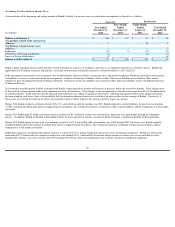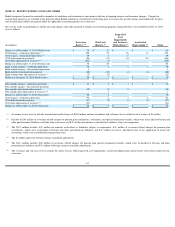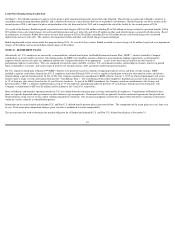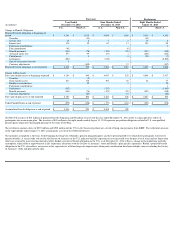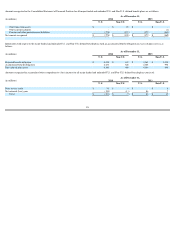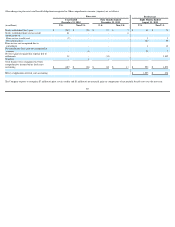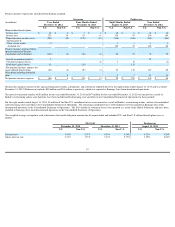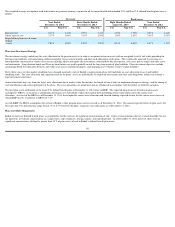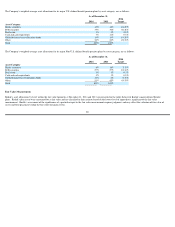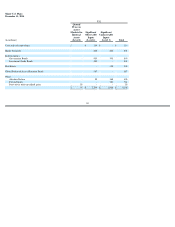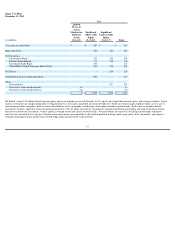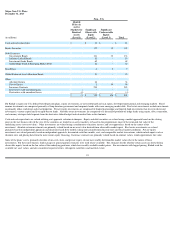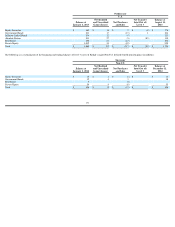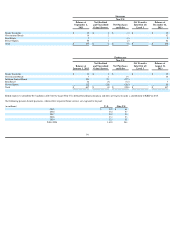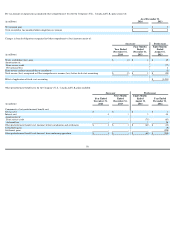Kodak 2014 Annual Report Download - page 91
Download and view the complete annual report
Please find page 91 of the 2014 Kodak annual report below. You can navigate through the pages in the report by either clicking on the pages listed below, or by using the keyword search tool below to find specific information within the annual report.
The weighted-average assumptions used to determine net pension (income) expense for all the major funded and unfunded U.S. and Non-U.S. defined benefit plans were as
follows:
Plan Asset Investment Strategy
The investment strategy underlying the asset allocation for the pension assets is to achieve an optimal return on assets with an acceptable level of risk while providing for
the long-term liabilities, and maintaining sufficient liquidity to pay current benefits and other cash obligations of the plans. This is primarily achieved by investing in a
broad portfolio constructed of various asset classes including equity and equity-like investments, debt and debt-like investments, real estate, private equity and other assets
and instruments. Long duration bonds and Treasury bond futures are used to partially match the long-term nature of plan liabilities. Other investment objectives include
maintaining broad diversification between and within asset classes and fund managers, and managing asset volatility relative to plan liabilities.
Every three years, or when market conditions have changed materially, each of Kodak’s major pension plans will undertake an asset allocation or asset and liability
modeling study. The asset allocation and expected return on the plans’ assets are individually set to provide for benefits and other cash obligations within each country’s
legal investment constraints.
Actual allocations may vary from the target asset allocations due to market value fluctuations, the length of time it takes to implement changes in strategy, and the timing of
cash contributions and cash requirements of the plans. The asset allocations are monitored, and are rebalanced in accordance with the policy set forth for each plan.
The total plan assets attributable to the major U.S. defined benefit plans at December 31, 2014 relate to KRIP. The expected long-term rate of return on plan assets
assumption (“EROA”) is based on a combination of formal asset and liability studies that include forward-looking return expectations given the current asset
allocation. A review of the EROA as of December 31, 2014, based upon the current asset allocation and forward-looking expected returns for the various asset classes in
which KRIP invests, resulted in an EROA of 7.4%.
As with KRIP, the EROA assumptions for certain of Kodak’s other pension plans were reassessed as of December 31, 2014. The annual expected return on plan assets for
the major non-U.S. pension plans range from 2.7% to 6.7% based on the plans’ respective asset allocations as of December 31, 2014.
Plan Asset Risk Management
Kodak evaluates its defined benefit plans’ asset portfolios for the existence of significant concentrations of risk. Types of concentrations that are evaluated include, but are
not limited to, investment concentrations in a single entity, type of industry, foreign country, and individual fund. As of December 31, 2014 and 2013, there were no
significant concentrations (defined as greater than 10 % of plan assets) of risk in Kodak’s defined benefit plan assets.
Successor
Predecessor
Year Ended
Four Months Ended
Eight Months Ended
Year Ended
December 31, 2014
December 31, 2013
August 31, 2013
December 31, 2012
U.S.
Non
-
U.S.
U.S.
Non
-
U.S.
U.S.
Non
-
U.S.
U.S.
Non
-
U.S.
Discount rate
4.16
%
3.24
%
4.25
%
3.24
%
3.52
%
3.59
%
4.26
%
4.46
%
Salary increase rate
3.37
%
2.66
%
3.39
%
2.80
%
3.40
%
2.83
%
3.45
%
2.98
%
Expected long-term rate of return
on plan
assets
7.63
%
4.88
%
8.20
%
5.51
%
8.12
%
6.63
%
8.52
%
7.11
%
88




